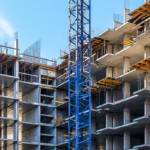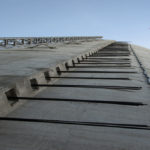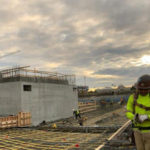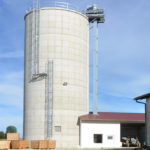Blog
Silo Reinforcement with Post-Tensioning Method

Silo has an important place for storing and storing materials in sectors such as industry, agriculture and construction in the late 19th century. Therefore, when silos were first used, stone, brick, wood, steel materials were used to keep people’s materials in the best way possible. In these times, silo construction continues to be a very important aspect of using them as storage in various industries by providing basic storage solutions. Today, it is becoming common for professional silo contractors to use post-tensioning reinforcement in the construction and maintenance of these basic silo structures.
During the silo application phase there are technical problems caused by limitations of design standards, weak design and periodic loading and unloading. Possible solutions include post-tensioning and reinforcement of concrete with corrosion resistant materials such as fiber reinforced polymers.
In post-tensioning designs, it is important to apply a suitable volume of the silo, to ensure good protection of the material and to make filling and unloading easy; statically, it is important to check the stability, strength, displacement, and crack widths of the structure.
Silos can be easily deformed due to non-uniform lateral pressures. As a result, it is necessary to work with experienced civil engineers in silo retrofitting projects.
An engineer doing a silo retrofitting project must first calculate the seismic analysis and be able to check the damage that may occur in terms of prevention. In addition to the static pressures of the materials stored in the silo, it also creates different dynamic pressures due to the friction of the particles among themselves and on the silo wall during seismic movement.
As a result, when post-tensioning is applied to the outer perimeter of the silo, it plays a major role in extending the life of the structure by safely strengthening the structure by reducing the lateral pressure of the silo.
In addition, during destructive earthquakes, silos are also subjected to buckling and normal shear stresses generated by the material inside the silo. Therefore, the magnitude and distribution of the forces generated in the silo vary according to the lateral pressure effect of the material inside and the occupancy rate of the silo. Silos with larger or heavier materials create a significant pressure in the structure due to the lateral load effect.
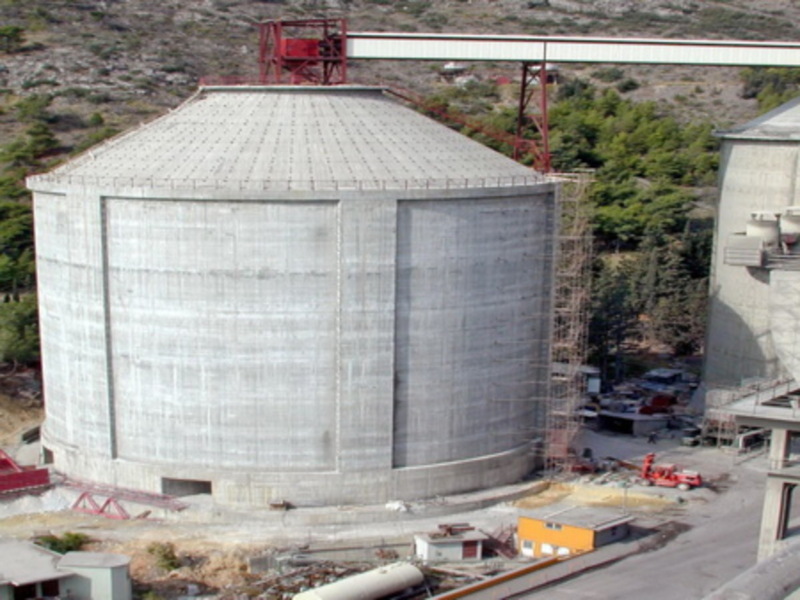
Considering the characteristics of the material to be stored in the silo, the calculation of the loads on the base and walls of the silo must be made in accordance with the principles specified in various specifications and regulations.
Quality design and workmanship in silo construction is very important to serve your activities well. Partnering with a reputable and experienced engineer and contractor will help guide your decision-making process. In the silo retrofitting project, a comprehensive static evaluation should be taken and the project should be entered into implementation. In this way, Silo reinforcement with post-tensioning will contribute to durable performance for many years to come.
Latest Blog
-
Why Are Reinforced Concrete Static Projects Important?
27 March 2025 -
Why Are Steel Static Projects Important?
21 March 2025 -
What is Acoustic CFD Analysis?
4 March 2025 -
Fire Analysis with CFD: Fire Safety and Simulation Technologies
25 February 2025 -
What Is A Static Project And Why Is It Important?
19 February 2025 -
Silo Static Project
29 July 2024 -
Methods Used In Earthquake Performance Analysis
4 July 2024 -
Reinforced Concrete Calculation Static Report
31 January 2024 -
Steel Calculation Static Report
31 January 2024 -
What Is CFD Analysis?
22 December 2023 -
What Are The Benefits Of CFD Analysis?
22 December 2023 -
Silo Reinforcement with Post-Tensioning Method
26 September 2023 -
Post Tensioning Method in Cantilever Slabs
4 September 2023 -
Post-Tensioning Application In Reinforced Concrete Silos
22 August 2023










